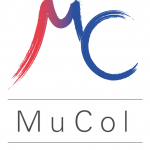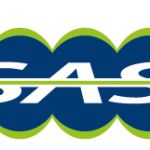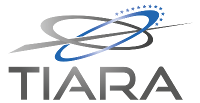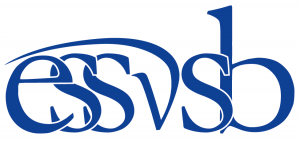
Projects

Innovation Fostering in Accelerator Science and Technology (I.FAST)
I.FAST aims to enhance innovation in the particle accelerator community, mapping out and facilitating the development of breakthrough technologies common to multiple accelerator platforms.
The project involves 49 partners, including 17 companies as co-innovation partners, to explore new alternative accelerator concepts and advanced prototyping of key technologies. These include, among others, new accelerator designs and concepts, advanced superconducting technologies for magnets and cavities, techniques to increase brightness of synchrotron light sources, strategies and technology to improve energy efficiency, and new societal applications of accelerators.

Heavy Ion Therapy Research Integration
The goal of Heavy Ion Therapy Research Integration plus (HITRIplus) is to integrate and propel biophysics and medical research on cancer treatment with heavy ions beams while jointly developing its sophisticated instruments.
Cancer is a central health problem for our society. Heavy ion beams irradiate tumours by focussing on the ill tissue while sparing the healthy part around, more effectively than any other irradiation treatment. The wider objective of HITRIplus is to provide radiation oncologists with a cutting-edge tool to treat the fraction of tumours that are not curable with Xrays or protons or have better survival rates or lower recurrences with ions.

AMICI
The collaboration between European Technological Facilities and Industry has been seminal for the realization of unprecedented scientific endeavors, like the LHC, EU-XFEL, ESS and ITER, that have recently projected Europe to an undisputed position of worldwide leadership. The AMICI H2020 project is charged by the European Commission with the challenging task of building the conditions for consolidating and exploiting such collaboration to strengthen the capabilities of European companies to compete on the global market, not only as qualified suppliers of components for accelerators and big superconductor magnets, but also in the development of innovative applications in advanced sectors such as healthcare and space.

EUROLABS
The project brings together, for the first time, the three research communities of nuclear physics, accelerator and detector technologies for high energy physics, in a pioneering super-community of sub-atomic scientists.
It provides effective access to a network of 45 Research Infrastructures (including 3 RIs with Virtual Access) to conduct curiosity-based research, addressing fundamental questions and technological challenges and advancing projects with broad societal impact, fostering knowledge sharing between scientific fields and enhancing Europe’s potential for successfully facing future challenges.
It allows a synergic implementation of best practices for data management and activities relating to targeted service improvements at these RIs. Joint training activities are foreseen to develop the skills of the next generation researchers to optimally use the RIs services for scientific and technological discoveries.

RITFI
Research Infrastructures (RIs) and Technology Infrastructures (TIs) are both essential and complementary elements for functional and efficient R&I ecosystems in Europe. They play a crucial role in strengthening European R&I capacities, from exploratory research to the development, validation and integration of innovative knowledge-based solutions into new products, processes and services. The RITIFI consortium, composed of RI and TI stakeholders from 19 European countries, aims to improve the integration and structure of the European R&I landscape. It will do so by developing a functional framework for the integration of RI and TI services tailored to the needs of end-users, by providing guidelines and methods to improve the visibility and access conditions of RI and TI to end-users, by developing an agile and TI-friendly governance model at European level; provide a comprehensive and multi-level analysis of the RI and TI policy landscape and propose an action plan to ensure alignment and synergies of access policies; Develop a process for prioritisation and synergies of investment plans for RI and TI sustainability; raise awareness and stimulate the inclusive engagement of managers, users and policy makers in the development of an integrated RI and TI landscape.
ESS Neutrino Super Beam
The goal of the ESSνSB project is to prepare the ground to discover and measure neutrino CPV with unprecedented sensitivity. This Design Study will cover the feasibility of the required upgrade of the ESS proton linear accelerator currently under construction and the design and performance of the required accumulation ring, the neutrino facility target station and the near and far detectors.

MUCOL
Muon colliders can reach centre-of-mass energies of tens of TeV with high luminosity, and they also allow accurate tests of the Standard Model at extremely high energy, offering opportunities to detect new physics indirectly and to confirm and to characterise direct discoveries. However, a number of technical challenges must be overcome in order to realise a muon collider.
The EU has supported the MuCol programme to address the core of these key challenges. MuCol will develop the collider concept and assess the physics performance based on realistic performance goals for the collider components.
The identification of the cost and power consumption drivers will enable determination of the cost and power consumption scale. This will allow the next European Strategy for Particle Physics Update (ESPPU) process to make informed choices for the selection of the next large collider to be built in Europe.

New research infrastructure to unlock mysteries of the universe
The EU-funded FCCIS project will deliver a conceptual design and an application plan for a new research infrastructure consisting of a 100 km circular tunnel and a dozen surface sites. Initially, the project will present an electron–positron collider, aiming to advance to an energy frontier hadron collider that will serve the world community by the end of the 21st century. The project will confirm the basic enablers at particle accelerators, aiming to consolidate the EU’s leadership in excellent science for the coming decades.

iSAS
The objective of iSAS (innovate for Sustainable Accelerating Systems) is to innovate those technologies that have been identified as being a common core of SRF accelerating systems and that have the largest leverage for energy savings with a view to minimizing the intrinsic energy consumption in all phases of operation
PACRI

SEEIIST
SEEIIST, proposed in late 2016 by Prof. Herwig Schopper, a former Director General of CERN and initiator of the international SESAME project in Jordan, received first official political support by the Government of Montenegro in March 2017.
The project will be implemented around the idea of the real international cooperation in the SEE region, gathering scientists, engineers, medical doctors, young people and technicians within the joint research infrastructure with the mission “Science for Peace”. The Institute will be a regional Centre of Excellence based on the state-of-art sustainable technology which will assure high competitiveness to the rest of Europe. It will promote the regional collaboration in the fields of science, technology and industry and will represent a knowledge-based economy project. Particular component of the project is a platform for education and training for young scientists, researchers, technicians, medical doctors, biologists, biomedicine engineers and others who will contribute to the improvement of the whole Region in terms of technological advances, medical innovations, scientific achievements, industrial empowerment and economic benefits.
Superconductivity Global Alliance (ScGA)
Project supported in the past
TIARA has supported many projects in the past years. A list of them is reported here below.
TIARA Preparatory Phase
Find out moreEuCARD2
Find out moreCARE
Find out moreEUROTeV
Find out moreARIES
SLHC-PP
Preparatory Phase of the Large Hadron Collider Upgrade
EUROLEAP
European laser electron controlled acceleration in plasmas to GeV energy range
EUCARD
European Coordination for Accelerator Research and Development
EURONU
A High Intensity Neutrino Oscillation Facility in Europe
EURISOL
European isotope separation on-line radioactive ion beam facility

